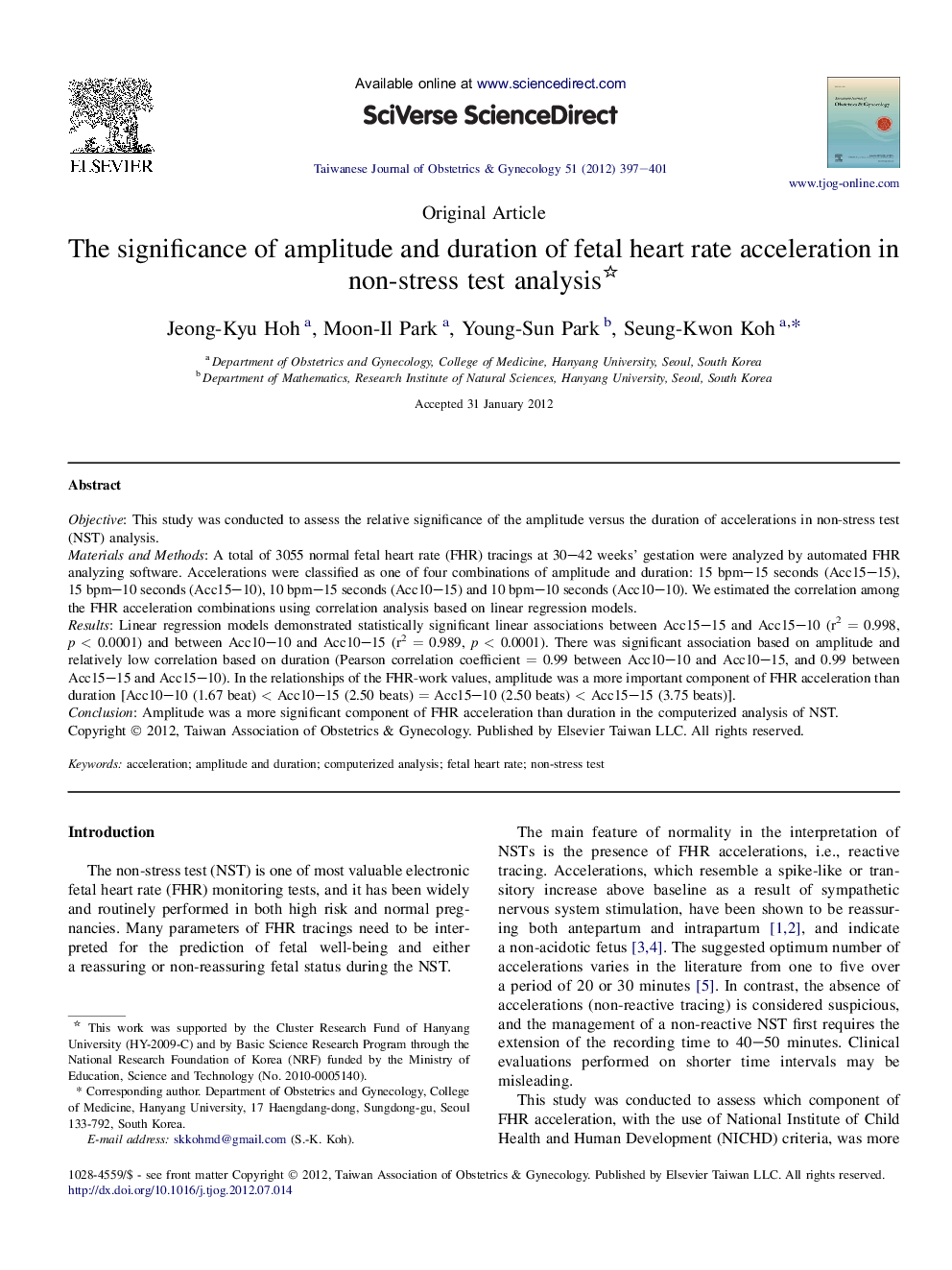| Article ID | Journal | Published Year | Pages | File Type |
|---|---|---|---|---|
| 3975686 | Taiwanese Journal of Obstetrics and Gynecology | 2012 | 5 Pages |
ObjectiveThis study was conducted to assess the relative significance of the amplitude versus the duration of accelerations in non-stress test (NST) analysis.Materials and MethodsA total of 3055 normal fetal heart rate (FHR) tracings at 30–42 weeks' gestation were analyzed by automated FHR analyzing software. Accelerations were classified as one of four combinations of amplitude and duration: 15 bpm–15 seconds (Acc15–15), 15 bpm–10 seconds (Acc15–10), 10 bpm–15 seconds (Acc10–15) and 10 bpm–10 seconds (Acc10–10). We estimated the correlation among the FHR acceleration combinations using correlation analysis based on linear regression models.ResultsLinear regression models demonstrated statistically significant linear associations between Acc15–15 and Acc15–10 (r2 = 0.998, p < 0.0001) and between Acc10–10 and Acc10–15 (r2 = 0.989, p < 0.0001). There was significant association based on amplitude and relatively low correlation based on duration (Pearson correlation coefficient = 0.99 between Acc10–10 and Acc10–15, and 0.99 between Acc15–15 and Acc15–10). In the relationships of the FHR-work values, amplitude was a more important component of FHR acceleration than duration [Acc10–10 (1.67 beat) < Acc10–15 (2.50 beats) = Acc15–10 (2.50 beats) < Acc15–15 (3.75 beats)].ConclusionAmplitude was a more significant component of FHR acceleration than duration in the computerized analysis of NST.
